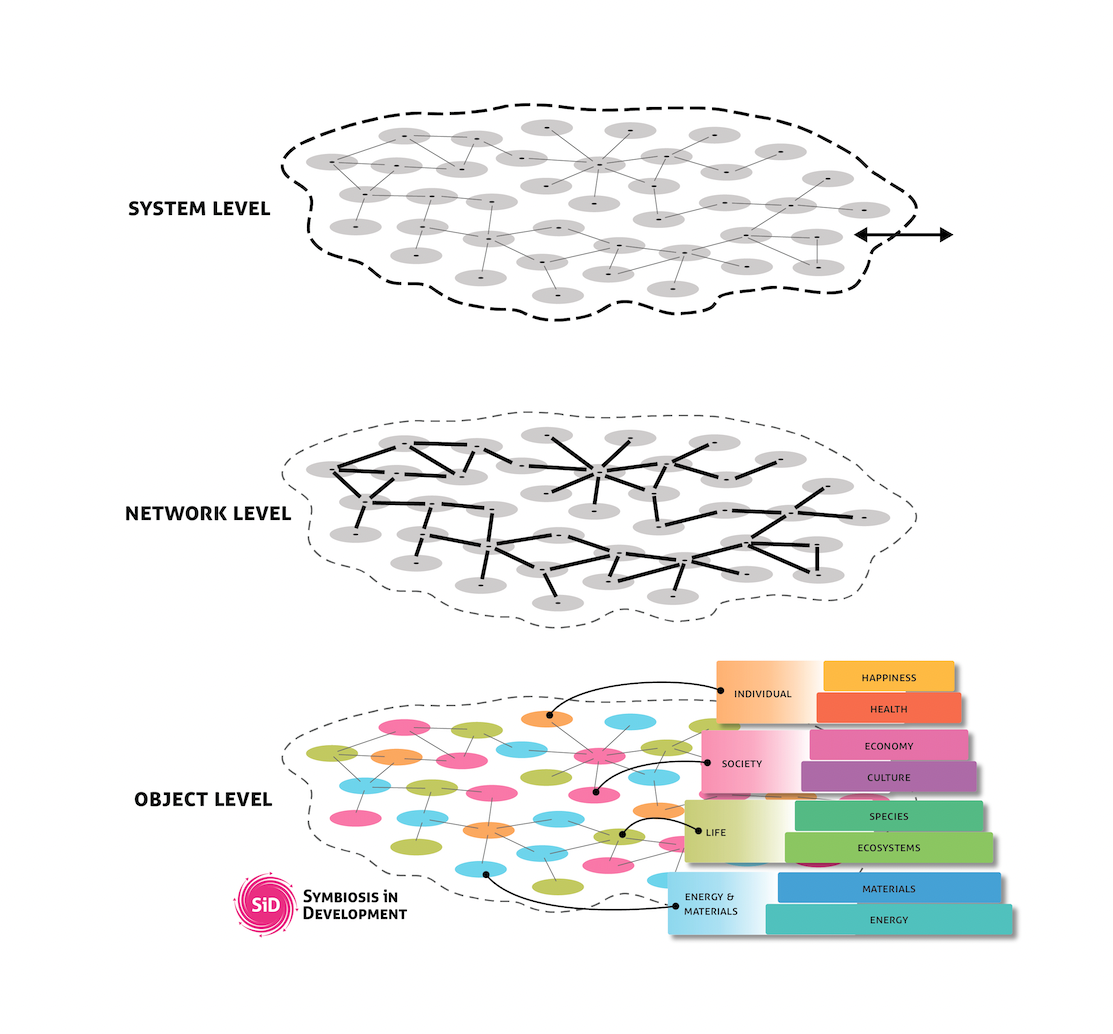By Mark Ratcliff, Communications Specialist at Except Integrated Sustainability –
How sustainable a system is and its ability to maintain itself over time and perform the same or similar function is not found in any object or thing. Instead, this elusive goal lies within the ‘network’ of connectivity and interactions that are embedded, but often unseen, among the material world.
This article is the final installment in the three-part series outlining the anatomy of a system and provides insight into how to begin approaching systems thinking. Building upon the system and object levels, this piece focuses on the network level, accounting for everything we can’t see, such as information and ideas, resource flows, laws, regulations, trade, and economic activity.

The network level, according to the Symbiosis in Development (SiD) systems thinking framework, lies between the system and object levels in the SNO (System-Network-Object) Hierarchy. The network level acts as a link and is where sustainability is either lost or found. (Source: Except Integrated Sustainability)
Interconnected flows and relationships
The network level refers to the myriad of complex interactions and behaviors within any system – sometimes referred to as ‘relationships’ or ‘flows.’ In some cases, such as work related to social dynamics, it’s helpful to think of these connections as ‘values.’
Regardless of what we may call them, these flows are not physical, so they remain abstract and challenging to observe. However, some aspects are easier to understand than others. For example, we’re pretty used to thinking about networks regarding communications, transportation, and the exchange of goods and services. However, the network level extends well beyond this to capture all the flows within a system, including less familiar things such as cultural norms, traveling times, and availability of fresh produce.
A straightforward example of understanding the network level is looking at the interactivity and the relationships within the bounds of a family home, where the parents, children, and pets are objects within the system. The interactions and communication between them represent the complexity of interactions recognized within the network level.
Unconditional love and supportive communication help to bolster the resilience of the family. On the other hand, if interactions between members disturb the harmony and sew distrust, it can cause instability. Like systems in the world around us, the sustainability of a family unit is only truly tested at times of disturbance, usually from an external force.

The network level accounts for the unseen interactions and flows between objects in a system. Such things as the number of friends one has, levels of social interaction, the time it takes to complete a bank transfer or the access to food in a given neighborhood. (Source: Pexels/Isaw)
Ever-changing network properties
The network properties of a system refer to the collection of relationships and interactions between objects within a physical space and across time. These flows are transient, dynamic, and often subjective, so systems need to be regularly assessed and analyzed.
Changes to a network’s properties can also affect the object level. For example, constructing a new school far away from a particular community will increase travel frequencies, distances, and times. Subsequently, this could cause the need to add more buses to a fleet, raise emissions, and potential additions to the road network. In turn, this change to the object level can reinforce the network in terms of increased social connectivity, employment opportunities, and more equitable access to education.
In summary
The network level conceptualizes the vast collection of relationships, interactions, and flows between all objects in the system. Because it is unseen and dynamic, the network is the most abstract level in systems thinking and analysis, but it is where genuine sustainability is realized.
This article concludes the three-part series on the introduction to thinking in systems using the SNO hierarchy from the SiD integrated systems thinking framework. I hope it’s been insightful as to why it’s essential for building the foundations of a sustainable and resilient future and inspires your journey into the vast world of systems thinking.
LINKS:
- THINKING IN SYSTEMS PART 1: THE SYSTEM LEVEL
- THINKING IN SYSTEMS PART 2: THE OBJECT LEVEL
- THINKING IN SYSTEMS PART 3: THE NETWORK LEVEL
All views and opinions expressed on this site are those of the individual authors and comments on this site are the sole responsibility of the individual contributor.

